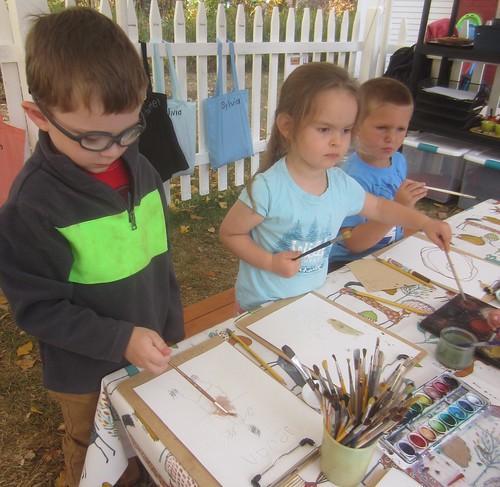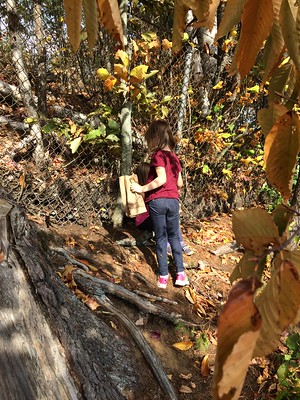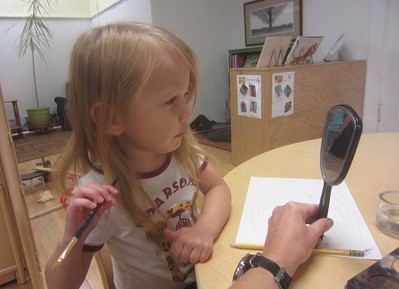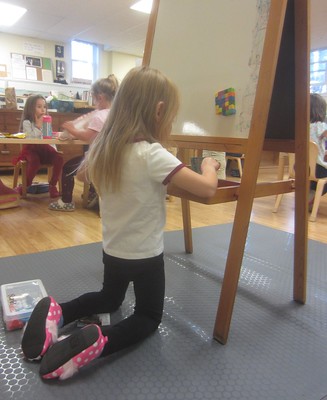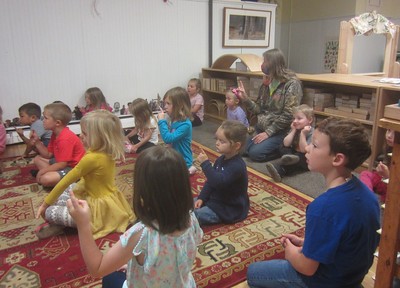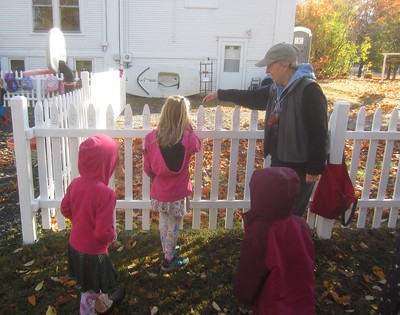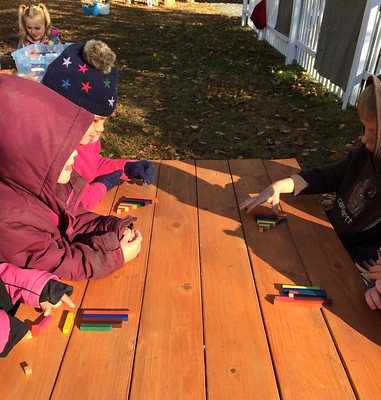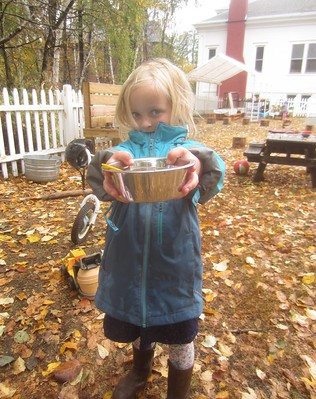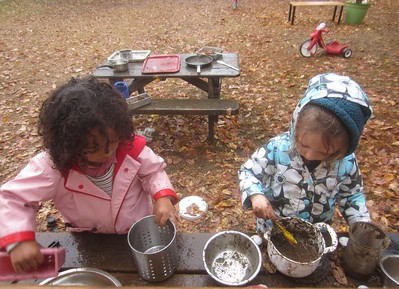Monday students were introduced to the artist Frida Khalo, who is famous for the many self portraits she painted. We observed several of her tamer self portraits and noticed that she painted herself realistically, and we discussed how we could do the same. The children selected eye and hair colors that matched their own, and mixed the colors espresso, cocoa, mocha, toffee, caramel, peaches, honey, and milk until they created a matching skin tone.
Tuesday brought our first walking field trip. We read The Hike and Finding Wild before the children shared all the safety rules for our walking adventure. The children were paired up with a partner and matched to an adult then we headed off to visit a new outdoor environment. We walked to Colonel Town, where we took some time to play on the playground then explored the top of the hill along the fence, searching for natural items. We collected leaves, cones, seeds, needles from evergreens, seed pods, broken sticks with insect markings, lichen, and bark, and any other plant parts we discovered.
Tammy started an experiment with us, and the children made some guesses about what they thought would happen. She had collected several sugar maple leaves, which can be identified as such due to the U curve between the top point and those on the sides. She placed some in a dish that will be left as they are as a control, and some in a second dish that she covered with vegetable glycerin. We will observe them over the next week to see how the leaves in the glycerin change or stay the same compared to those not in glycerin. Some of the guesses where that they would change color, they would explode, they would crinkle up, they would all be green, and they wouldn’t crinkle up.
We finally got some much needed rain to wet down our dusty playground! It sent us inside for some indoor classroom time, which was a first for many of our new students, and a nice change in environment. The students took advantage of the block area, dramatic play, the art table, the math and literacy materials, and unlimited access to the bathroom.
During sign language with Rose we learned 7 more letters of the alphabet, h-n, and reviewed then practiced the time of day signs we learned last week while singing the song Skidamarink. We began combining signs to sign phrases. We learned how to sign good morning, good night, one day, all day, and all night.
Kindergarten students have continued finding patterns in numbers as they recorded the 18th day of school. They are tracking multiples of 2, 3, 4, and 5 now. They are beginning to explore base 10. Using Cuisinaire rods they made some observations about the longest, shortest, and which rods go together in groups of 2 to match the longest. They explored the letter Dd by creating Dd’s out of DIRT.
We learned about leaves and the jobs of the leaf. Leaves provide shade from the heat of the sun, produce oxygen for us to breath, and are the food makers. Henry the elephant had a little chat with a green plant and the chlorophyll inside the leaves. They discussed how the leaves use the green chlorophyll inside them to mix with water, carbon dioxide, and the energy from the sun to create food for the plant. The food that the plants produce makes them the primary producers. They feed not only themselves, but us humans and animals as well. We also learned that the green chlorophyll turns the leaves green, masking the true color of the leaves which we are only able to see in the fall as the leaves stop making cholorphyll to prepare for winter.
We played a leaf finding game. The children would run and find a leaf that matched the description given, such as smooth edge, toothed edge, bigger than your hand, smooth surface, and green leaf.
Friday students read about the life cycle of a tree and the parts of a tree. They shared what all the parts of the tree do; the bark protects it, like our skin, the leaves produce food, the roots drink up the water and keep the tree anchored to the ground, and the trunk keeps it sturdy and brings the water up and food down. We examined some plant roots to see how some are bigger, but others are as fine as hairs. We did an experiment to see how plants drink water and bring it up to the leaves by placing leafy celery stalks in colored water and observing how they drew the colored water up into the leaves.



